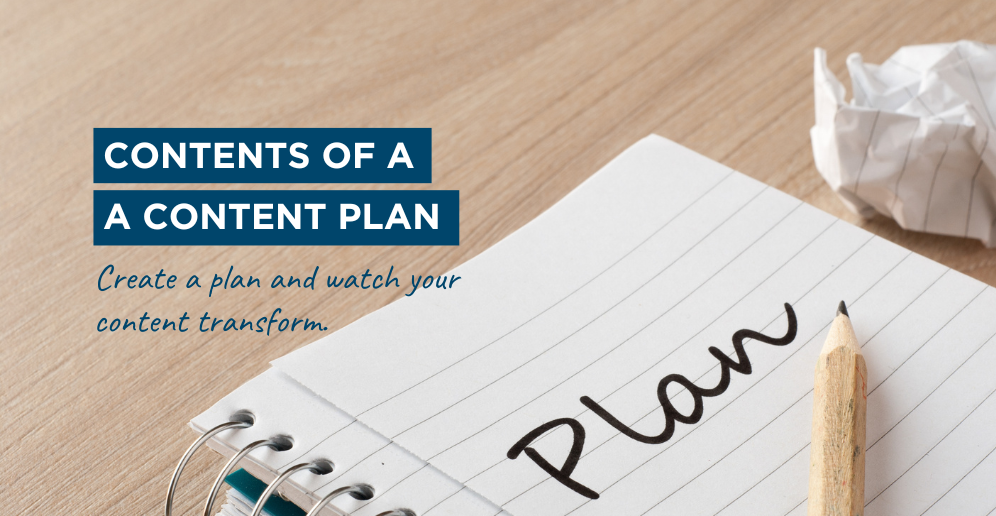If you’re in the world of content creation you know how important it is to always be thinking of ways you can create content that is engaging and will resonate with your audience. But are you making this more difficult than it needs to be? You don’t need to be a content marketer, and there are many tools to help with creating engaging and useful content, and a content plan is arguably the most important.
The basics
But first, the basics, what is content? When people think of content they usually only consider social media but content is more diverse than just Instagram and Facebook.
Content includes everything from blogs, advertising – digital and traditional media forms such as print and radio, website copy, and other marketing channels – including TikTok, YouTube, Pinterest etc and marketing collateral such as brochures, posters, business cards and more.
Anywhere you have written copy or a visual representation of your brand falls under content, which is why it’s so important to understand your brand and a content plan can ensure your brand messaging is consistent and clear.
Why do i need a content plan?
If someone had never heard of your brand or services, would you be able to explain to them who your audience was? Do you know how they speak, where to find them? Do you know what content they are looking for or what problems they need to solve?
Creating the right content is more than just writing an engaging caption with a great graphic to then post on your socials. You can write the world’s best copy and design the perfect image, but if it doesn’t resonate with your audience, the results will disappoint.
A content plan gives you a framework and understanding of the purpose of your content. It is a roadmap to your audience from your objectives, goals and strategic planning.
Now that we know why a content plan is important, and the benefits of having one, what goes into creating a content plan?
What should i include?
Each content plan will be different and should be customised to your specific business needs, however, there is a basic framework you can use when starting off.
1. Introduction and About
Your content plan requires context. Include a background about your brand or service and the intention and purpose of the plan. For example: Betty’s Cupcakes is a boutique bakery based in Curtin, Canberra. Betty’s Cupcakes has been providing the Canberra Community with delicious cupcakes since 2016. This plan will be a key tool in positioning Betty’s Cupcakes as Canberra’s best boutique, local bakery and connecting with your audience and community.
2. Objectives and Goals
What are your goals? What do you hope your content will help you achieve? For example: Increase online sales or educate clients.
3. Key Messages
How do you want to communicate your brand? What are the key phrases and words you want your audience to associate with you?
4. Target Market and Personas
Who are you talking to? Outline what your target audience likes and dislikes, their behaviours, pain points and how you can reach them. Without your customers, your business wouldn’t exist, which is why it’s vital to understand them and how to talk to them.
5. Content Pillars
These are your content themes. They will frame your key messages and become the ‘what’ of your content.
6. Create Content Examples
Having a visual representation and examples of your content can help you to explain your ideas and show how you will create the content outlined in your plan. You could also include tips to create content that aligns with the content pillars.
For example: Drafting a social media post using a mock-up site for Facebook or Instagram will show how your content may look across these social platforms.
7. Content Types
What will you use to generate content? User Generated Content (UGC), photography and video, email marketing? Lay out all the ways in which you can produce content.
8. Channels
Where will your content live? Take time to critically assess your audience to discover where they spend time and then target them in these locations. Whether that be Facebook, Instagram, YouTube, TikTok etc.
9. REPORTING
How will you know if your content is working? Outline what metrics you will use to measure your content success and how you will report on these results.
what makes a successful content plan?
A successful content marketing plan comes down to the basics.
- Write it as though someone with no prior knowledge was picking this up for the first time. Can they understand it and create the right content from it?
- Is your plan clear and concise? It’s easy to get carried away and put everything into your content plan, but the best content plans are short and sweet.
- Get to the point. State your objective, outline how you aim to achieve this and how you plan on measuring its success.
Keep it simple.
[/et_pb_text][/et_pb_column][/et_pb_row][et_pb_row _builder_version=”4.18.0″ _module_preset=”default” theme_builder_area=”post_content”][et_pb_column _builder_version=”4.18.0″ _module_preset=”default” type=”4_4″ theme_builder_area=”post_content”][et_pb_button button_text=”Still not sure where to start? Contact the Threesides team to discuss your content needs.” _builder_version=”4.18.0″ _module_preset=”default” theme_builder_area=”post_content” button_url=”https://threesides.com.au/contact-us/” hover_enabled=”0″ sticky_enabled=”0″][/et_pb_button][/et_pb_column][/et_pb_row][/et_pb_section]
